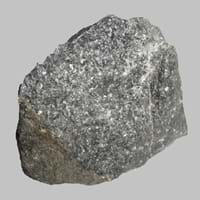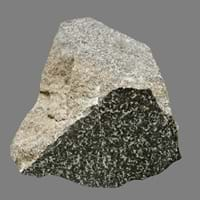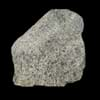Definition
Andesite is a dark, fine-grained, brown or greyish intermediate volcanic rock which is a commonly found in lava
Diabase is a fine-grained igneous rock which is composed mostly of pyroxene and feldspar
Origin
North America
Germany
Discoverer
Unknown
Christian Leopold von Buch
Etymology
From Andes mountains, where it is found in abundance
From Greek di + base
Class
Igneous Rocks
Igneous Rocks
Sub-Class
Durable Rock, Hard Rock
Durable Rock, Hard Rock
Other Categories
Fine Grained Rock, Opaque Rock
Fine Grained Rock, Medium Grained Rock, Opaque Rock
Texture
Aphanitic to Porphyritic
Aphanitic, Granular
Color
Bluish - Grey, Grey, Pink, Yellow
Dark Grey to Black
Durability
Durable
Durable
Scratch Resistant
Yes
Yes
Appearance
Dull and Soft
Vesicular
Interior Uses
Decorative Aggregates, Floor Tiles, Homes, Interior Decoration, Kitchens
Countertops, Decorative Aggregates, Homes, Interior Decoration, Kitchens
Exterior Uses
Office Buildings, Roof Tiles
As Building Stone, As Facing Stone, Paving Stone, Garden Decoration, Office Buildings
Other Architectural Uses
Curbing
Curbing
Construction Industry
Cobblestones, Construction Aggregate, for Road Aggregate
As Dimension Stone, Building houses or walls, Cement Manufacture, Construction Aggregate, for Road Aggregate
Medical Industry
Not Yet Used
Not Yet Used
Antiquity Uses
Artifacts, Monuments, Sculpture, Small Figurines
Artifacts, Monuments, Sculpture, Small Figurines
Commercial Uses
Commemorative Tablets, Creating Artwork
An Oil and Gas Reservoir, Cemetery Markers, Commemorative Tablets, Laboratory bench tops, Jewelry, Sea Defence, Tombstones
Types
Icelandite
Not Available
Features
Generally rough to touch, High silica content, Is one of the oldest rock
Smooth to touch
Archaeological Significance
Famous Monuments
Middle of the Earth in Ecuador
Stonehenge in English county of Wiltshire
Famous Sculptures
Data Not Available
Data Not Available
Pictographs
Not Used
Not Used
Petroglyphs
Not Used
Not Used
Formation
Andesite is a fine-grained igneous rock that forms when the magma is erupted onto the surface and is crystallized quickly.
Diabase forms when molten igneous rock is squeezed up into a vertical crack in other rocks, the crack is usually forced apart and the molten rock cools in the space to form a tabular igneous intrusion cutting across the surrounding rocks and is known as a dike.
Mineral Content
Amphibole, Apatite, Biotite, Feldspar, Garnet, Hornblade, Ilmenite, Magnetite, Plagioclase, Pyroxene, Zircon
Augite, Chlorite, Olivine, Plagioclase, Pyroxene, Pyrrhotite, Serpentine
Compound Content
Silicon Dioxide
Aluminium Oxide, CaO, Chromium(III) Oxide, Iron(III) Oxide, Potassium Oxide, MgO, Sodium Oxide, Silicon Dioxide, Sulfur Trioxide
Types of Metamorphism
Burial Metamorphism, Cataclastic Metamorphism, Contact Metamorphism, Hydrothermal Metamorphism, Impact Metamorphism, Regional Metamorphism
Burial Metamorphism, Cataclastic Metamorphism, Contact Metamorphism, Regional Metamorphism
Types of Weathering
Biological Weathering, Chemical Weathering, Mechanical Weathering
Biological Weathering, Chemical Weathering
Types of Erosion
Chemical Erosion, Coastal Erosion, Glacier Erosion
Chemical Erosion, Coastal Erosion, Water Erosion
Grain Size
Very fine-grained
Fine to Medium Grained
Fracture
Uneven
Conchoidal
Porosity
Less Porous
Highly Porous
Luster
Vitreous
Not Available
Cleavage
Not Available
Not Available
Specific Gravity
2.5-2.8
2.86-2.87
Transparency
Opaque
Opaque
Density
2.11-2.36 g/cm3
2.7-3.3 g/cm3
Specific Heat Capacity
Not Available
Resistance
Heat Resistant, Pressure Resistant, Wear Resistant
Heat Resistant, Impact Resistant, Pressure Resistant, Wear Resistant
Deposits in Eastern Continents
Asia
India, Indonesia, Japan, Nepal, South Korea
India
Africa
Egypt, Ethiopia, Morocco, Namibia, South Africa, Tanzania
South Africa, Tanzania
Europe
Austria, Finland, Germany, Italy, Romania, Turkey, United Kingdom
Germany, Greece, Italy, Scotland, Turkey
Others
Not Yet Found
Antarctica, Greenland
Deposits in Western Continents
North America
Mexico, USA
Canada, USA
South America
Argentina, Bolivia, Chile, Colombia, Ecuador, Peru, Venezuela
Argentina, Brazil, Colombia, Venezuela
Deposits in Oceania Continent
Australia
New South Wales, New Zealand, Western Australia
Central Australia, New Zealand, Queensland, Western Australia










